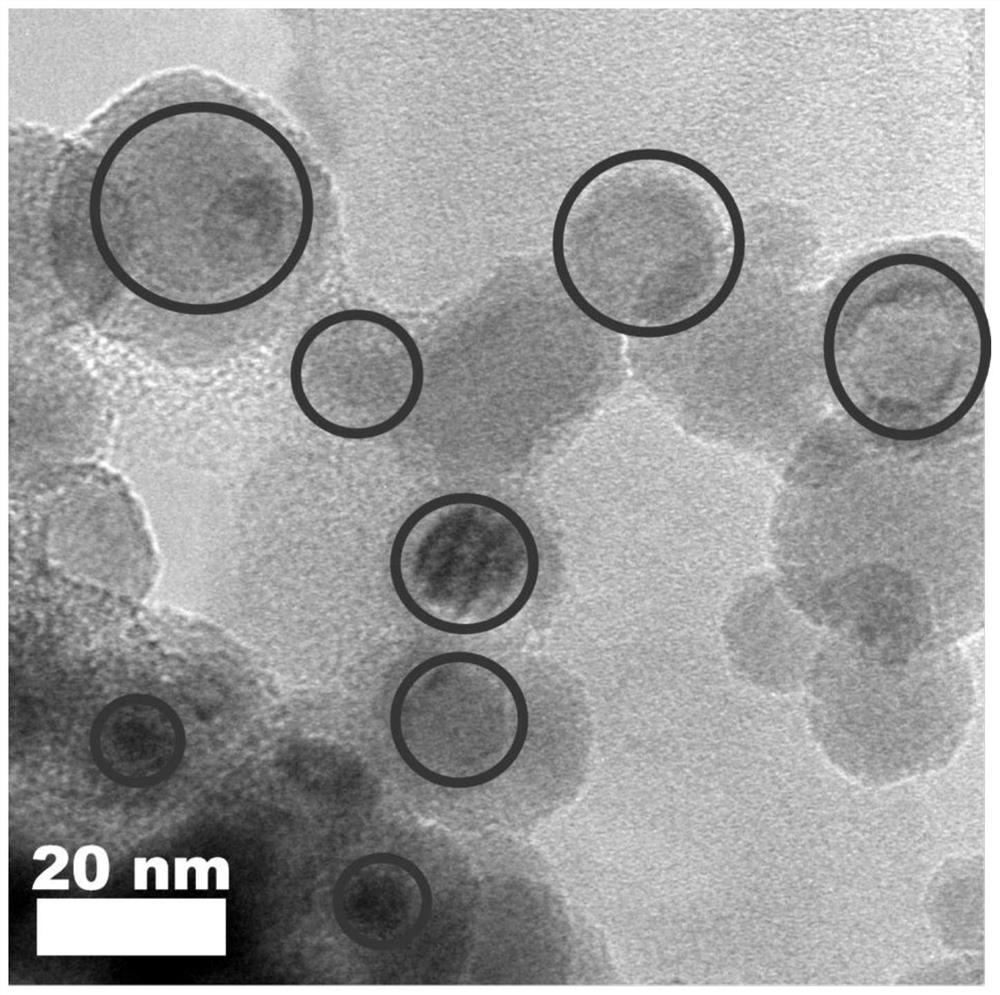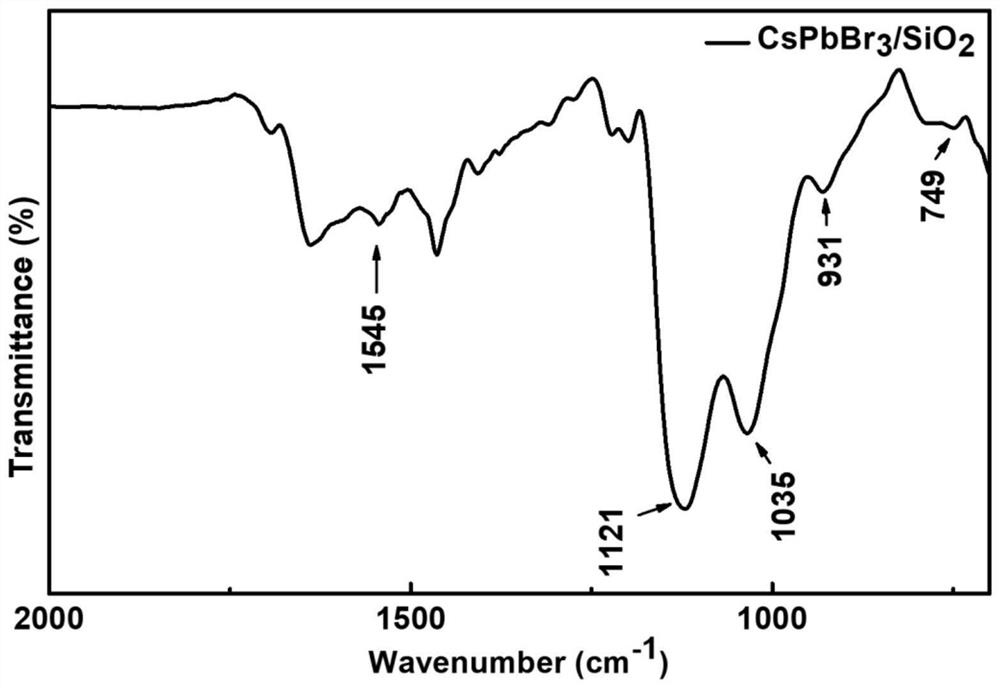Preparation method for CsPbBr3@SiO2 nanoparticles with ultrahigh water stability
A nanoparticle and stability technology, applied in the field of preparation of CsPbBr3@SiO2 core-shell nanoparticle, can solve the problem of inability to effectively control the size of nanocrystals, and achieve high efficiency and good water stability, high efficiency and good fluorescence performance, and water stability sex enhancing effect
- Summary
- Abstract
- Description
- Claims
- Application Information
AI Technical Summary
Problems solved by technology
Method used
Image
Examples
Embodiment 1
[0029] 1) 0.1g cesium carbonate (Cs 2 CO 3 ), 1mL of oleic acid (OA) was added into a reaction flask with a capacity of 50mL, and the nitrogen was changed three times under vacuum. Then add 10mL 1-octadecene (ODE) to the reaction bottle with a syringe, heat and stir under nitrogen atmosphere, first set the temperature to 120°C, heat and dry under nitrogen atmosphere for 30min until cesium carbonate is completely dissolved and becomes transparent to obtain cesium oleate solution. After hot injection into lead bromide (PbBr 2 ) before the precursor solution, raise the temperature and keep it at 140°C;
[0030] 2) Add 0.2g PbBr 2 Add it to a reaction flask with a capacity of 50 mL, vacuumize and change nitrogen three times. Then add 10 mL of 1-octadecene (ODE) into the reaction flask with a syringe, heat and stir under nitrogen atmosphere. First set the oil bath temperature to 120 °C, N 2Heat and dry under ambient conditions for 30min; then add 1mL oleic acid (OA), 0.9mL o...
Embodiment 2
[0043] What this embodiment provides is CsPbBr 3 @SiO 2 The test method of nanoparticle solution stability, described preparation method comprises the following steps:
[0044] 1) Choose water and CsPbBr 3 The volume ratio of the toluene solution is 1:1 to test CsPbBr 3 and CsPbBr 3 @SiO 2 The long-term water stability, and continued to stir for a certain period of time, took different periods of the solution for optical performance testing.
[0045] The prepared CsPbBr in this specific example 3 @SiO 2 The characterization results of the nanoparticles are as follows:
[0046] Such as Figure 5 Shown is the water and CsPbBr prepared in this embodiment 3 The volume ratio of the toluene solution is 1:1. The actual measurement map shows that the volume ratio of water and toluene is much higher than the previous report. It can be seen that even after 48h, it still shows good fluorescence imaging (increasing with time A total of 7 photos in 48 hours).
[0047] Such as ...
Embodiment 3
[0050] What this embodiment provides is CsPbBr 3 @SiO 2 The test method of the water stability of nanopowder, described preparation method comprises the following steps:
[0051] 1) The prepared CsPbBr 3 @SiO 2 The nanoparticle solution was washed twice with toluene and methyl acetate, and then dried to obtain CsPbBr 3 @SiO 2 Nano powder.
[0052] 2) The prepared CsPbBr 3 @SiO 2 Powder particles of nanoparticles are placed in pure water to test CsPbBr 3 @SiO 2 Fluorescent Stability of Nanopowders in Pure Water Environment
[0053] The prepared CsPbBr in this specific example 3 @SiO 2 The characterization results of the nanoparticle powder are as follows:
[0054] Such as Figure 8 Shown is the CsPbBr prepared in this embodiment 3 @SiO 2 Fluorescence stability of nanopowders in pure water environment. The results showed that even at 48h, CsPbBr 3 @SiO 2 The nanopowder still exhibits very superior fluorescence properties, indicating that CsPbBr 3 @SiO 2 The s...
PUM
| Property | Measurement | Unit |
|---|---|---|
| Particle size | aaaaa | aaaaa |
| Thickness | aaaaa | aaaaa |
Abstract
Description
Claims
Application Information
 Login to View More
Login to View More - R&D
- Intellectual Property
- Life Sciences
- Materials
- Tech Scout
- Unparalleled Data Quality
- Higher Quality Content
- 60% Fewer Hallucinations
Browse by: Latest US Patents, China's latest patents, Technical Efficacy Thesaurus, Application Domain, Technology Topic, Popular Technical Reports.
© 2025 PatSnap. All rights reserved.Legal|Privacy policy|Modern Slavery Act Transparency Statement|Sitemap|About US| Contact US: help@patsnap.com



